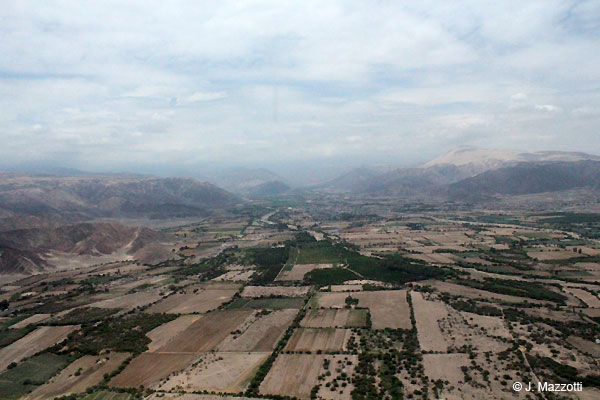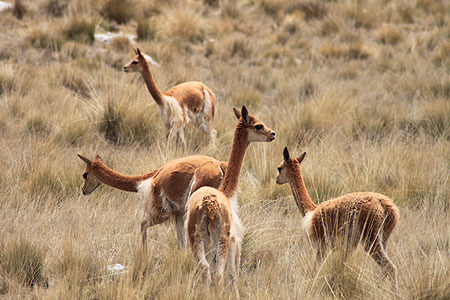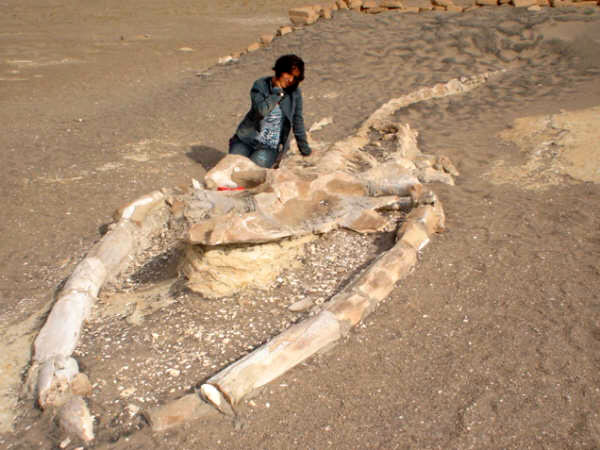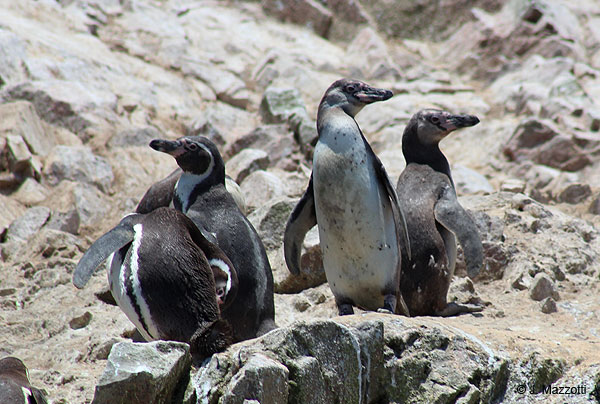Around Nazca City
Interesting places to visit around Nazca City as Pampas Galeras and San Fernando natural protected areas, Sacaco is a rich location of fossil remains, Cerro Blanco the highest-know sand dune in the world for sandboarding.
Cerro Blanco
Cerro Blanco is the considered the highest sand dune in the world and the favorite for experienced sand boarders to enjoy and flying down. It was considerate a sacred mountain for the Nazca civilization, the real name of this sand dune is in Quechua language “Yuraq Orqjo”, it means “White Mountain”. The dune is 2,078 m.a.s.l. and 1,176 meters from base to summit. Located 14 Km. from Nazca City, on the east of Nazca valley, only one hour driving by the highway Nazca - Cusco.
National Reserve of Pampa Galeras Barbara D'Achille
Protected Natural Area. Unit of conservation and protection of species of wildlife regional, is the largest area for the protection of the vicuña, endangered species and vegetation, prevails the ichu (Stipa ichu). Beautiful scenery in an Andean highlands and the best place to meet in the wild vicuña. The vicuña (Vicugna vicugna) is a camelid mammal, living in the highlands of the Andes, has an elevation of 95 cm and a weight of 55 kilos on average, long-necked and elegant figure. Is covered with short curly wool very soft red wheat color of extraordinary finesse. Lives up to 15 years and can be tamed.
The vicuña was in danger of extinction due to their ruthless hunting. Their wool is the finest textile fiber in the world, highly valued in the international market. It is represented in the national emblem of Peru as the symbol of the richness of the animal kingdom.
Every year in May or June, is celebrated the traditional chaccu ceremony of Inca origin, with the participation of thousands of people forming a human chain in large open fields to herd and concentrate on a single point for census the vicuña, then separating sick and old animals, and then turn to the ceremony shearing. This recall also brings thousands of tourists. The recommended access to visit the reserve is from the Nazca City (90 Km).
CHACCU
Sacaco
Million years ago in the desert of Sacaco, there was a bay full of marine life, with huge animals following geological changes are preserved as fossils. Species that lived during the upper Miocene and lower Pliocene among which huge sharks, whales, giant ground sloths and clumsy oysters, which are now exposed. Site museum founded by Hans Jacob Siber. Located 100 Km (62 miles) south of Nazca City, in the Bella Union district, Arequipa. To reach this area, you must follow the South Pan-American Highway until kilometer marker 539 and take a detour of 1.5 Km to the Sacaco museum.
San Fernando Reserved Zone
Protected Natural Area. Lies to the west of Nazca and borders the sea. Situated about 75 Km away from Nazca City, on the southwest, within Marcona district, covering a large area it is part of the desert that stretches down the cost of Peru. It is an extraordinary marine ecosystem of great biodiversity; it has a little extension of 54 hectares and has the biggest population of sea lions (seals) of the Peru concentrates. The peninsula is characterized by its abrupt cliffs 30 meters high that hinder the access, from the high part, to the eighteen beaches that are formed at level of the reef. Besides the sea lions, in this protected area inhabits the biggest colony of penguins of Humboldt (Spheniscus humboldtii) (it is considered that concentrates more than 50% of the total population of this species on the Peru), as well as Inca Tern (Larosterna inca) and the three main species of dung birds (guaneras). While the sea lions are located in the beaches and salient rocky, the penguins look for the protection of the cavities that they are formed in the walls of the cliffs and the birds rest and they nest in the sharp hillsides and in the plateau that extends in their higher area.








